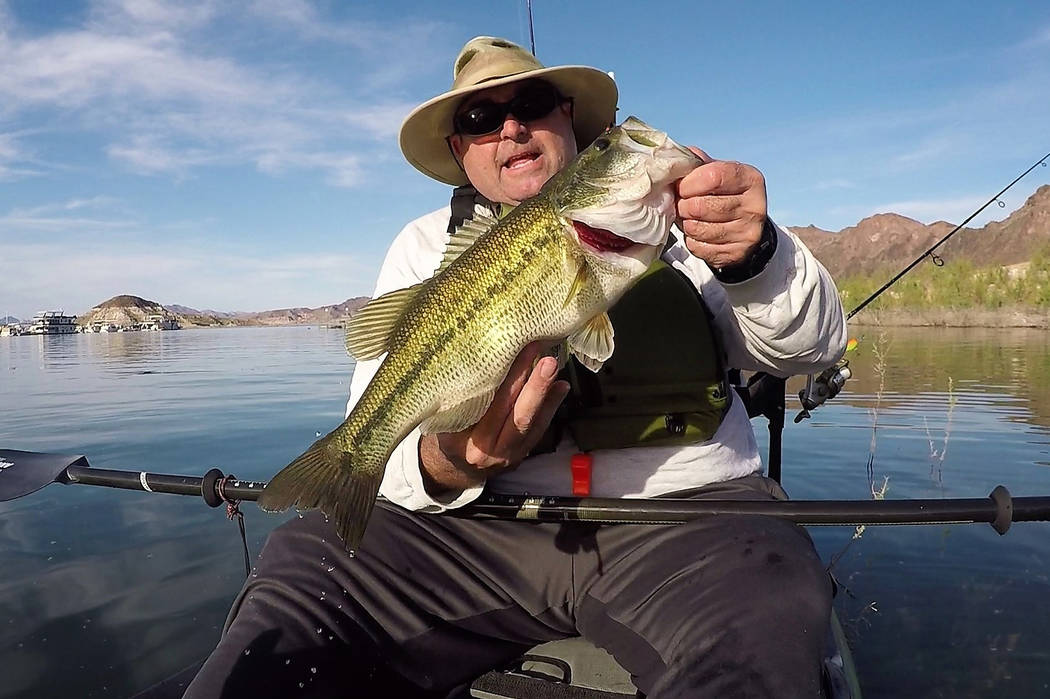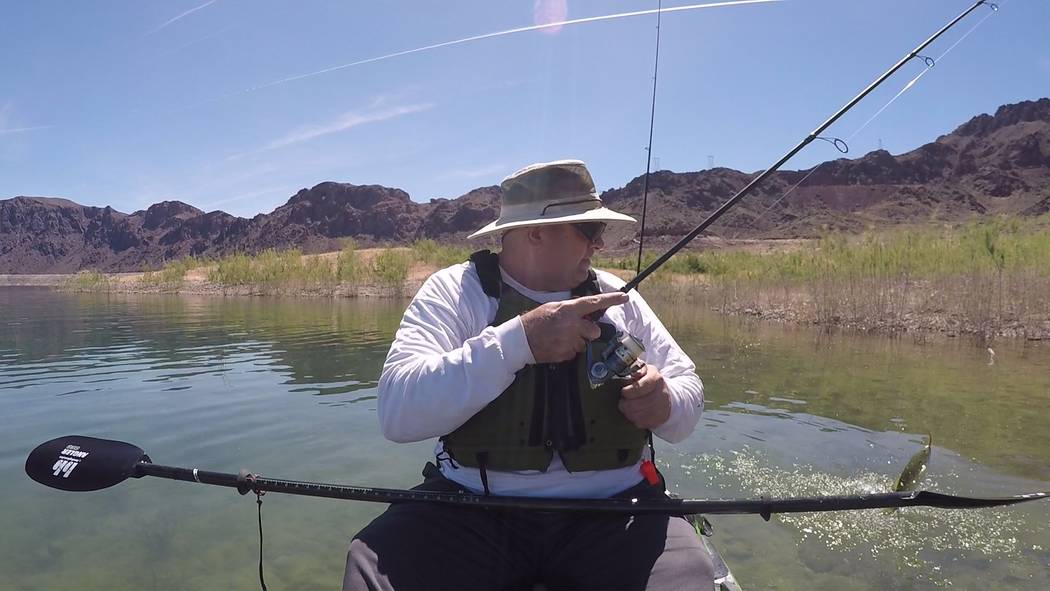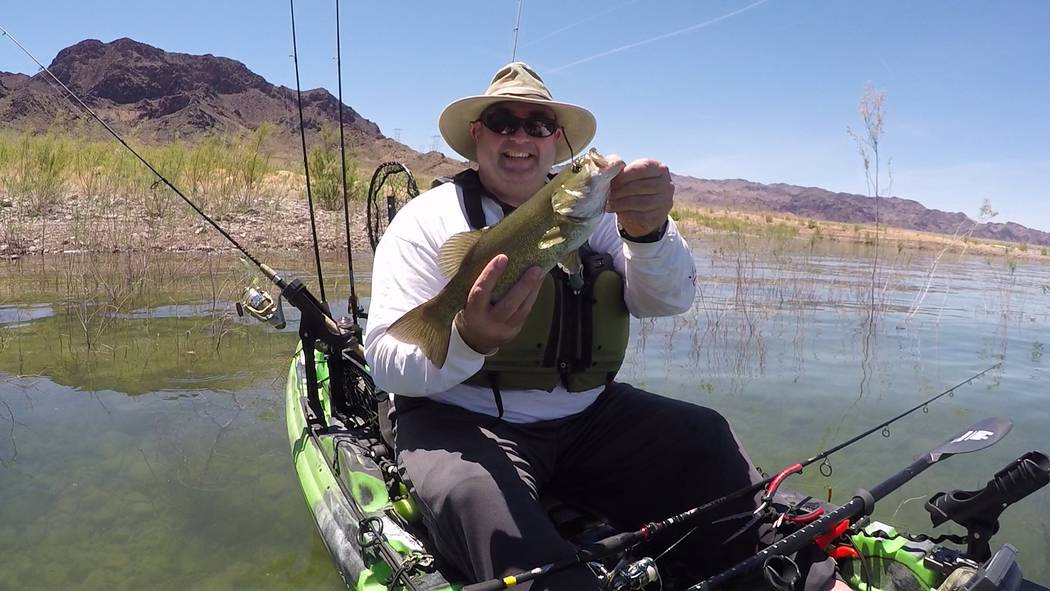Patience, persistence key to catching large black bass at Lake Mead




When it comes to fishing for black bass at Lake Mead, the past two weeks have been among my most enjoyable since taking up warm-water fishing. I caught my two largest Lake Mead largemouth and learned a lot along the way.
One of the first things I learned is the stealth benefit of a kayak. With no motor and a shallow draft, kayaks give an angler the unique ability to slip through areas of flooded vegetation where a full-size boat or even a float tube can’t go.
The focal point of my efforts has been a small section of flooded tamarisk squeezed between the shoreline and a small island. It sits on a shallow flat perhaps an acre in size with an average water depth of 4 to 5 feet. While much of the vegetation is below the surface, there remains a significant amount that reaches above it.
While concentrating on tying a new spinnerbait to my line after watching its predecessor sail unattached into oblivion, the wind pushed my kayak into a clump of tamarisk. The sound of brush along the kayak’s gunwale caught me by surprise. When I looked up, I found myself overlooking a circular gap in the vegetation. There in the middle of that gap was a plump bass.
Not wanting to spook the fish, I quickly yet quietly backed out of the brush, but at the same time decided to try a sneak attack. I gave the fish a couple of minutes to relax and slowly made my way to a place where the brush would hold the kayak in place and I could drop my bait into that gap.
A few minutes later, with the kayak’s nose wedged between two tamarisk shoots, I reeled the new spinnerbait through that gap. The fish was tucked under the edge of a dead tamarisk stump and wanted nothing to do with the spinnerbait, so I pulled out a drop shot rig and dropped a 4-inch Power Worm in front of the bass.
At first, he paid no attention to it, but a couple of flips and a few wiggles later proved to be too much. He hammered the worm and swam hard for cover.
I reared back on the rod and managed to turn his head before he wrapped my line around a thick limb. Soon he was on board for a few frames on the GoPro. Since that was kind of cool, I decided to try it again and worked my way slowly around and through the brush looking for similar pockets of open space outfitted with a plump bass.
The next lesson I learned was the need for patience.
I found a shallow pocket below a small tree and threw a Jumpin’ Minnow that direction. The lure landed about 2 feet left of my intended target, and the water blew up immediately as a fish swatted the lure. I missed the fish, but he came back for a second try, then a third and a fourth. All on the same cast. He never really bit the lure, just kind of slapped at it. I pulled out the drop shot and slid the kayak up where I could get a closer look.
Below the tree on a fully exposed bed of gravel, a smallmouth bass stood guard over a nest. I flipped the worm beyond the nest and turned the reel handle slowly to bring the bait toward the nest. The fish and I played chicken for the next several minutes. Each time I worked the worm into his nest, the fish moved it out, but he never bit it.
We seemed to face off in a test of wills that I eventually won when the fish finally decided he had enough and bit the worm. A similar scenario played out for a much larger largemouth bass a few minutes later.
This time there were two. Both were good fish, but one was obviously much bigger than the other. The drop shot proved to be the deciding factor again, and the smaller of the two was soon aboard for a few photos before being released.
A similar pattern played out a couple of more times on that outing, and each time it was the drop shot that made the difference. But patience and persistence was the key to catching the fish.
Freelance writer Doug Nielsen is a conservation educator for the Nevada Department of Wildlife. His “In the Outdoors” column, published Thursday in the Las Vegas Review-Journal, is not affiliated with or endorsed by NDOW. Any opinions in his column are his own. He can be reached at intheoutdoorslv@gmail.com.












